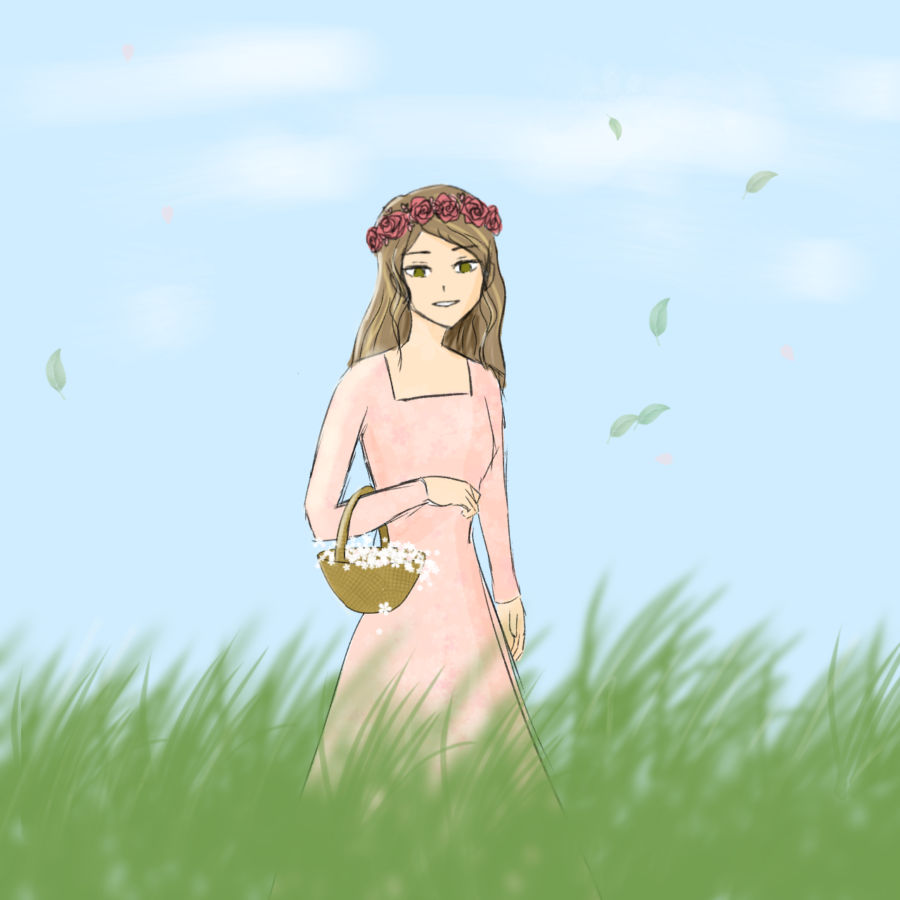Why are we so obsessed with cottagecore?
Cottagecore portrays an unrealistic ideal that many wish to attain. Is that a good thing?
October 29, 2021
Lush green fields of blooming flowers, a constantly clear blue sky, the rustic stone cottage shrouded by a mysterious forest—these provide the idyllic backdrop of a life based on the concept of cottagecore. An avid follower of this aesthetic (also known as farmcore or countrycore) might also enjoy wearing flowy floral dresses with puffy sleeves, collecting freshly grown fruits from their backyard garden, and passing the time by trying out new crafts, baking, or reading.
But why?
Cottagecore exemplifies the yearning of people wanting to escape their stressful lives in the modern world to seek a simpler life. This has been emphasized by the ever-increasing amount of technology flooding our lives. Instead of papers due at midnight and bills waiting to be paid, people can focus on domestic work, self-sufficiency, and caring for others by retreating to a romanticized countryside.
Ironically, the aesthetic gained its following online, even though the concept is based on rejecting modern society and technology.
During lockdown, cottagecore gained even more appeal as many were trapped inside their homes, unable to explore and enjoy their lives as they could before. Thus, videos of pastel homes and warm sunsets in the mountains filled phone screens and spread across platforms.
Massive trends associated with cottagecore arose in 2020, like Animal Crossing, a game that shares influences with the aesthetic (such as gardening and living among nature) and Lirika Matoshi’s strawberry dress that went viral for its whimsical, fairy-like design. Taylor Swift also had fans enamored with her album “folklore” which explored visual aspects of farmcore in her music video for “cardigan.”
Inevitably, the rise in popularity also came with criticism for the aesthetic.
Some people living in rural areas pointed out that cottagecore perpetuates an unrealistically romanticized version of farm life in the media, encouraging the ignorance of those who do not understand the actual lives of farm workers. Instead of showcasing the arduous labor and economic struggles that farmers endure, cottagecore on the internet showcases expensive dresses and delicate handicrafts that cannot be paid for with small-time farming or craft-making.
For example, the strawberry dress costs nearly $500.
Fans of cottagecore argued that they simply fantasize about it and that they do not actually plan to move into rural areas and survive off their own gardens and domestic labor. They incorporate the aesthetic into their daily lives by perhaps creating a few crafts, dressing up, or baking in their free time. What they are doing does not cause any issues for the farmers, and they should be allowed to enjoy themselves without being attacked for it.
As most cottagecore enthusiasts experience the aesthetic through images and videos on the internet, they always have the option to click off and close the images of quaint cottages and freshly baked bread and return to their lives. However, real farmers do not have that privilege as they are dealing with the real world, not an idealized or fictional one.
So, is cottagecore centered around a perfect countryside crafted from fantasy, or is it a misunderstood view of rural areas?
Cottagecore is based on colonial-era European countryside life, and when imagining it, many imagine a slender white woman dressed in a whiter dress strolling through her garden, admiring the flowers. In reality, life was not like this for people of color and most women—inclusivity was not a widely discussed topic in the Romantic era. However, modern day cottagecore is not a look back in time but the creation of a fantasy world, separate from the gender norms, classism, and racism that plagued colonial times.
On the topic of inclusivity, the cottagecore movement has also found extreme popularity among the wlw (women-loving-women) community and women of color. For those who feel rejected or unaccepted by society, running away to an obscure place can be liberating. It can also be a way to feel included in a history that rejected their existence.
There is no cooking or cleaning for a demanding family, rather, deriving happiness from simple chores performed out of free will. Women do not dress up to be praised by men—they do it because they simply like it. In this way, traditional gender roles and stereotypes are shunned by cottagecore.
Anyone can wear a pretty dress and bake cookies in a cottage, regardless of their race, gender identity, sexuality, religion, or size.
Cottagecore mixes viewing farm life through rose-tinted lenses and daydreaming about an ideal life while staring at a phone screen. But at its core, it is about embracing femininity, celebrating the joys of domestic life, and living in the moment. Many have found comfort in the ever-growing collection of snapshots of flower fields and cups of rose tea, and many more will.




